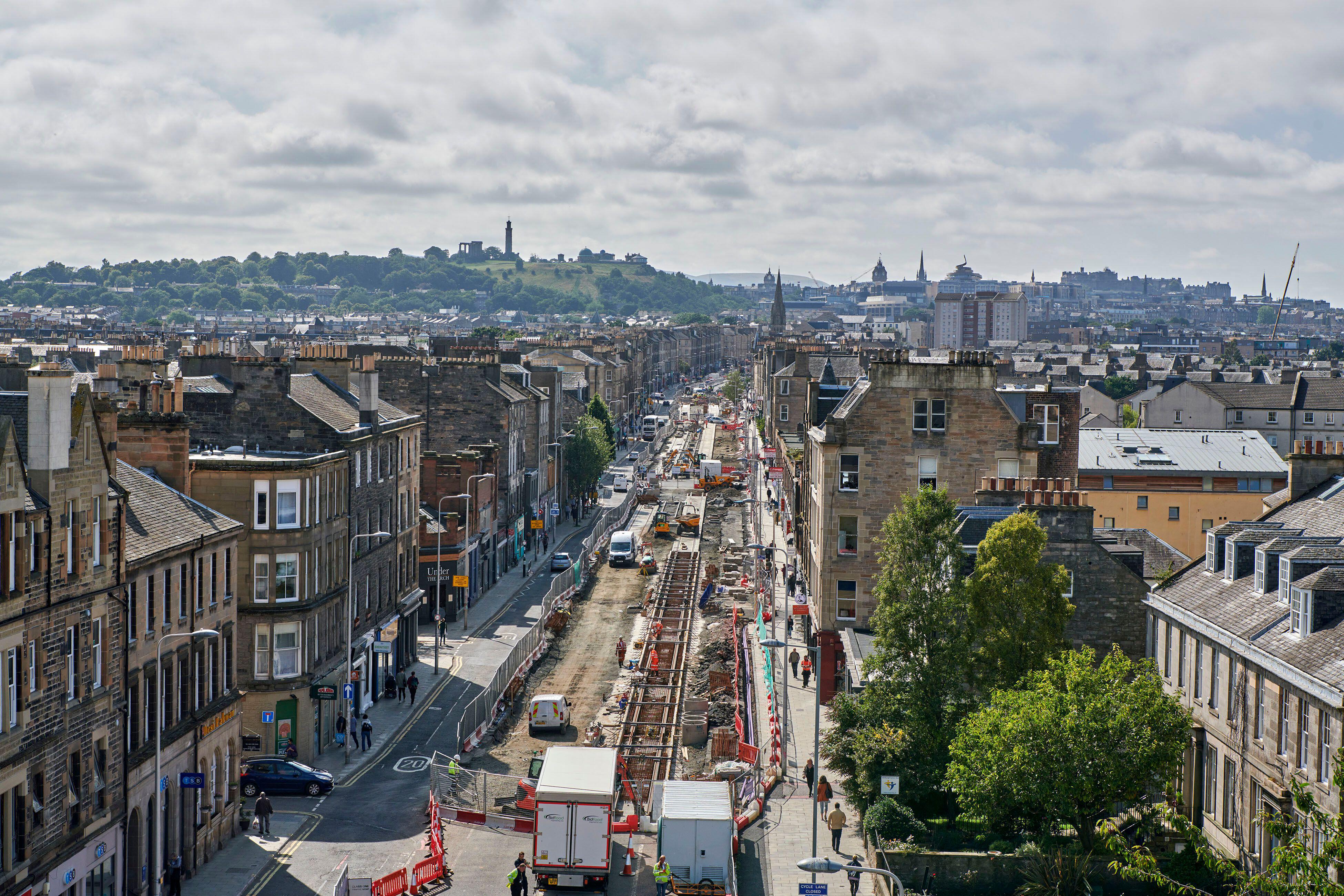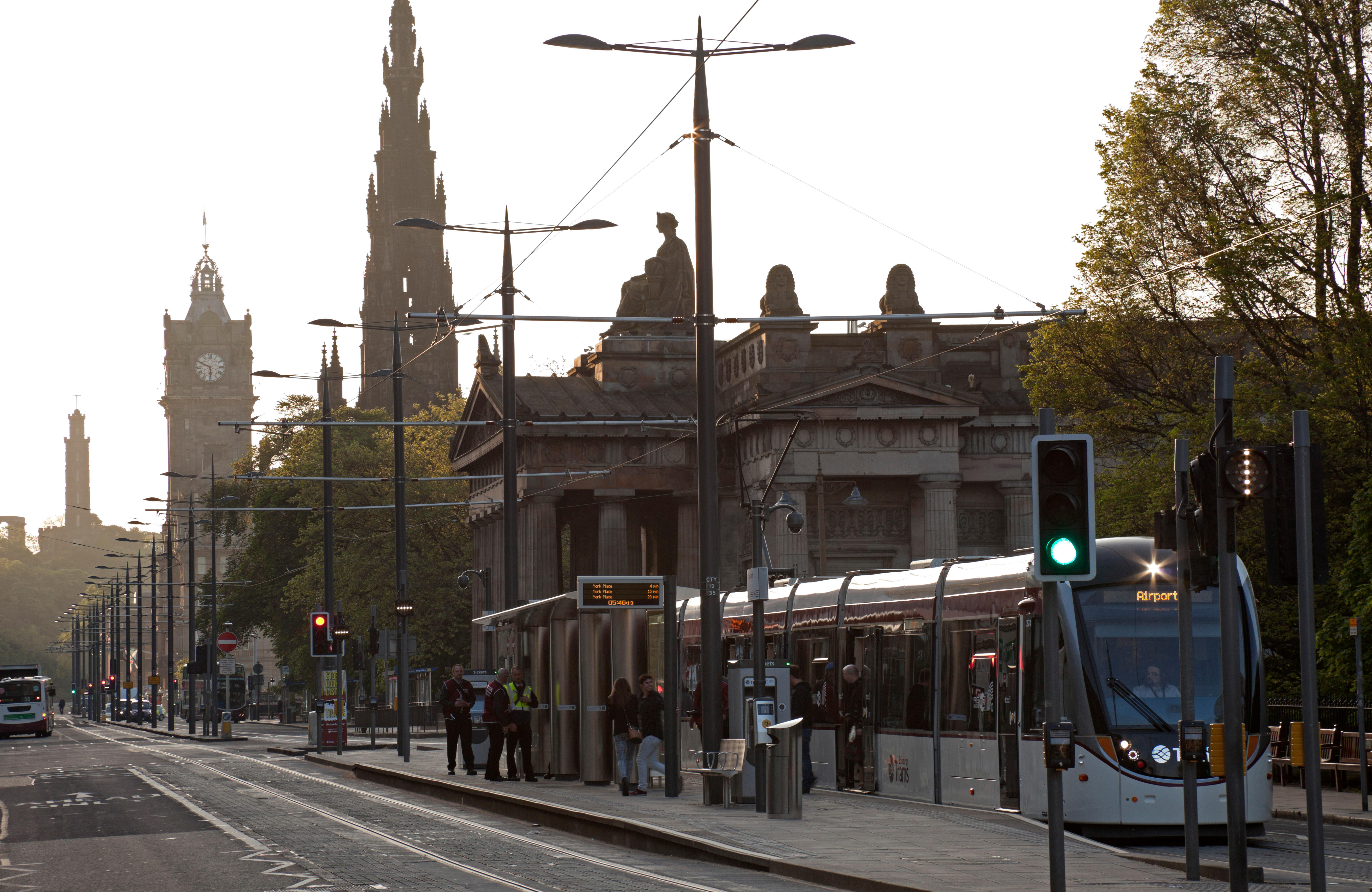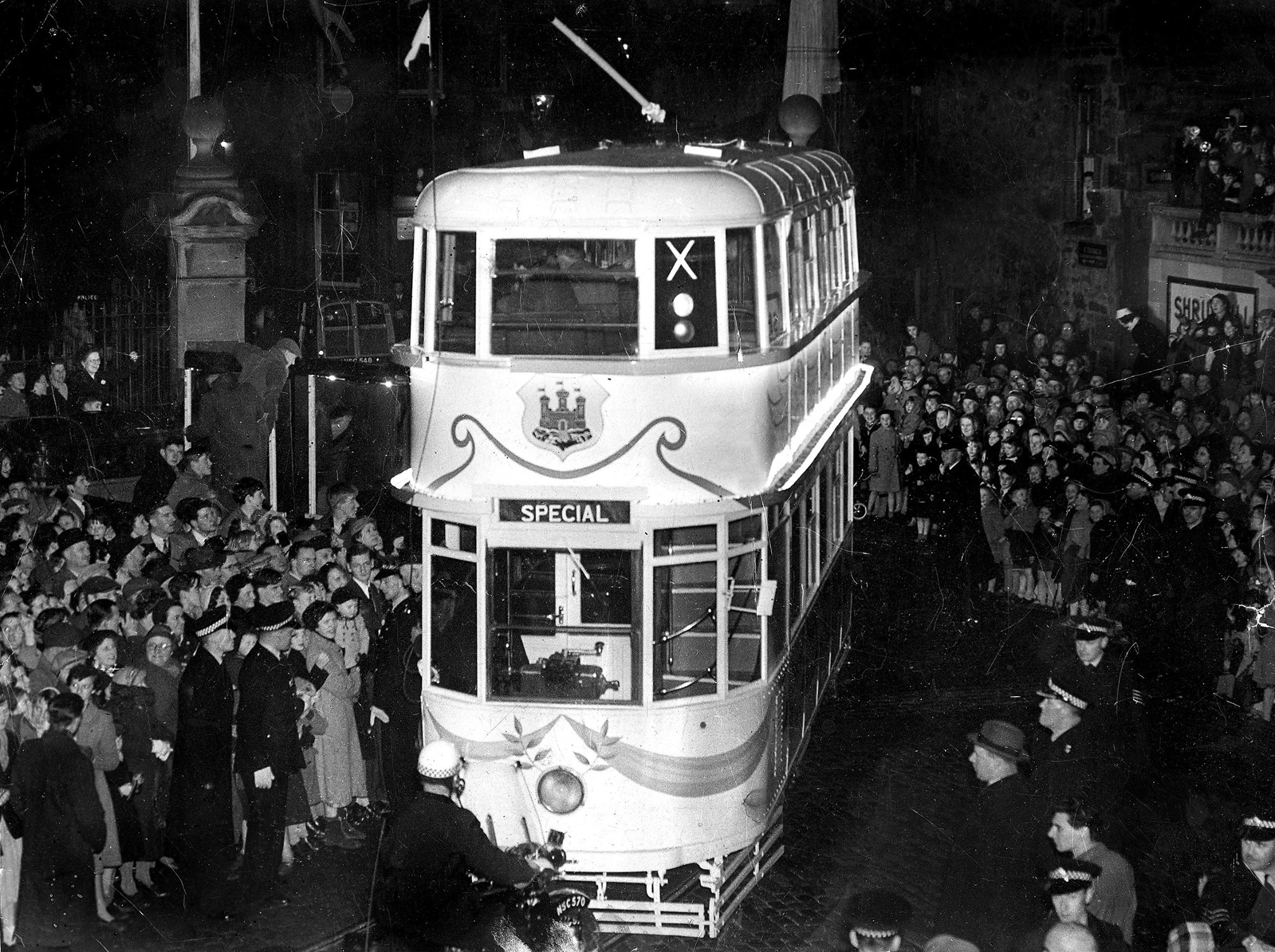Hell on Wheels: How the Edinburgh tram project got back on track
If there’s one street which has suffered more than any other during the construction of the Edinburgh tram project, it’s Leith Walk. Roughly a mile long, it links the city centre with the historic port which was first incorporated into Edinburgh just over a century ago.
The Edinburgh Boundaries Extension and Tramways Act of 1920 redrew the map of the city, causing its population to grow by nearly a third overnight. But not everyone was happy. The wishes of Leithers, who had voted against the move in a referendum, were ignored, the famous old burgh subsumed into its bigger, wealthier neighbour.
Today, Leith Walk is one of the capital’s most vibrant streets, belying the upheaval it has been forced to endure since the trams were first signed off in 2007. Fifteen years on, this important thoroughfare is home to some of the city’s best bars and restaurants. At Shrubhill, an ugly gap sight where once stood a mothballed tram depot has been transformed into new apartments and student housing, helping re-shape the demography of the area, and encouraging the likes of Sainsbury’s and Starbucks – both already ubiquitous elsewhere in the city – to set up shop. Most significant of all, next year – all being well – Leith Walk will finally have trams.
At times over the past decade and half it has felt like Edinburgh has inflicted an egregious act of self-harm, blocking off pavements and making trenches out of city streets. Driving in the city can feel like a journey into the unknown with new diversions springing up on an almost daily basis. But if the project has been an inconvenience for pedestrians and motorists, it has been a constant blight for businesses forced to suffer works on the street outside.
When construction first began in 2008, the tram line was due to link Edinburgh Airport in the west of the city with Newhaven in the north via Princes Street. A separate spur line would connect the west end with Granton harbour. The entire project was expected to cost taxpayers just over £500m. But when the first trams finally arrived six years later, a heavily truncated route between the airport and the city centre ended up costing around double that. To add insult to injury, many of those who lived and worked next to construction sites – Leith Walk, for example – saw their streets simply reinstated to the way they were before, without tram tracks ever being laid.

Tram works on Leith Walk, 2021 | Credit: Alamy
As a reporter working on the Edinburgh Evening News in the late 2000s, the tram was the story that kept on giving. Amid the daily calls I received from members of the public about power cuts, road closures and mysterious cracks appearing in their tenement flats, there were also a series of memorable headlines generated by stressed-out executives who came and went with a reliability that the project itself could only dream of. Such were the comings and goings, the trams developed a reputation for breaking those who had been hugely successful in other walks of life.
High-profile resignations included tram chairman Dave Mackay, who quit in 2010 amid an acrimonious dispute with German contractor Bilfinger Berger, memorably referring to the project as “hell on wheels” in his parting shot. His successor, the late Vic Emery, then told a room full of journalists that the works had left Scotland’s capital city looking like war-ravaged Tripoli amid audible gasps from face-palming PR staff.
Right from the very start there were murmurings of disquiet, of hurriedly signed contracts where paragraphs ended mid-sentence, or disagreements with contractors about the cost of the work being carried out. And everyone was briefing against one another. By 2011, there was serious talk of scrapping the project altogether, although that idea was shelved when it emerged that to do so might end up costing even more than just finishing the bloody thing.
But if the project itself was sclerotic, the public inquiry set up to investigate what went wrong has become similarly mired in delay and controversy over its cost. Now expected in the coming weeks, Lord Hardie’s final report is eight years in the making, predating both the Scottish independence referendum and Brexit. With more than £13m expected to be spent by the end of the current financial year, the inquiry will cost the taxpayer roughly the same amount as Sir John Chilcott’s inquiry into the Iraq war, although that one took less time to complete.
Had the SNP got its way, the project would have been halted completely in 2007 when the party came to power in the Scottish Parliament. The then minority administration lost a vote at Holyrood which prevented it from scrapping the scheme but allowed it a plausible deniability from that day onwards when things came off the rails. Despite being a major infrastructure project in Scotland’s capital, critics accused the government of effectively washing its hands of the tram system, grudgingly handing over an initial £500m and then repeating “not a penny more” for the next few years as delays and cost overruns mounted.
Stewart Stevenson, transport secretary between 2007 and 2010, has a different interpretation. He says the government was behind the project but disagreed with Edinburgh city council about the route the first line should take.
“What we were against was the particular route for the tram, rather than trams as such,” he says. “We thought any investment in trams should be much more an inner ring to connect the peripheral routes at a time when you had to come into central Edinburgh and catch a bus to somewhere else…”
Stevenson admits to now being a frequent user of the current system and has fond memories of taking the tram along Princes Street as a child in the 1950s. He was among the final witnesses to give evidence to the inquiry when it ceased public hearings more than four years ago.
“The idea of a [funding] cap was not a new one introduced by the SNP. Furthermore, the whole parliament without dissent voted to support the cap so there wasn’t a political dispute around the existence of a cap or even material debate about how much it should be.
“Was the whole thing overlaid by political debate and discussion? Yes, of course it was and so it should have been because it was a significant amount of money, but I think we tried to be as supportive as we reasonably could of Edinburgh council, who were having a torrid time with Bilfinger Berger.”

When the inquiry began its work in earnest in late 2014, it was hoped it would quickly draw a line under an embarrassing chapter in Edinburgh’s recent history. Among the tram’s critics, it had become a bit of a trope to compare the project to the National Monument, a memorial to the fallen of the Napoleonic wars which was begun in 1826 but never completed. Yet those who likened the tram project to the monument forever known as “Edinburgh’s Disgrace” somehow failed to notice that despite its difficult beginnings, the overwrought piece of Greek Revival has become a beloved symbol of the city it towers above from Calton Hill.
And indeed, once the trams began running, they would confound their critics. Despite the setbacks, despite the heavily truncated route, despite everything, they were a success. While the line from the airport to the city centre lost £450,000 in its first year of operation, it carried three million passengers – more than had been expected. By 2019, before the country went into lockdown for the pandemic, around 7.5 million passengers were travelling on the route, although Edinburgh Trams also made a £9.4m loss that year after infrastructure costs were transferred from the city council.
The next section of the route will open to passengers in the spring, an additional 2.91 miles in each direction and eight new stops which will finally link Leith to the city centre. Fifteen years on from when MSPs voted to press ahead, the city will finally have the route it was first promised. An entirely new line, which would link the city centre with Edinburgh Royal Infirmary and the city’s bioquarter at Little France, has also been mooted.
Christian Wolmar, a transport expert and author of Are Trams Socialist?, has followed the Edinburgh project with interest. After all the upheaval, does he still think trams are a good fit for British cities in 2022?
“I’m afraid I do, actually,” he says. “Particularly if they’re built at a reasonable cost, which they do seem to manage to do abroad.
“Trams are transformational in a way that other public transport isn’t. They show very strongly, in other words, you can see them on the street and they’re sleek and modern and efficient. The middle classes use them, and they’re often reluctant to use buses. They are a way of imprinting public transport permanently into the urban realm.
“The first section has succeeded expectations in terms of people travelling on it. Yes, it’s been expensive, but we have to look at transport in a holistic way – what it does in terms of the environment, making people closer to their jobs, improving the urban realm, reducing congestion, you have to count all those things…”
When the last of the previous generation of trams went out of service in Edinburgh in 1956 – painted in a special white livery rather than the shade of madder which continues to be used on the city’s buses – thousands lined the Mound and Princes Street to bid it farewell. Such was the antipathy towards the new system in the early days of construction that it would be hard to see such affection returning any time soon. While still at the Evening News, I was once involved in an early morning car accident after the taxi driver transporting me to a job got in such a state fulminating over tram-related roadworks that he drove straight through a red light.
But while Edinburgh has had to learn lessons the hard way, it should stand the capital in good stead for turning its one line into a city-wide network. There is now a depot, a tram-train interchange and a good deal of knowhow in the city about how to run a tram system.

Crowds gather to wave off the last tram in 1956 | Credit: Scotsman Publications
Fifty miles to the west, Glasgow looks set to embark on its own urban rail journey. Clyde Metro is among 45 long-term transport projects outlined earlier this year by the Scottish Government which seek to transform travel in line with the goal of being net zero for carbon emissions by 2045. The metro, which would improve connectivity using buses, trams and underground trains, could take up to 35 years to complete, with initial estimates putting the cost at somewhere between £11bn and £16bn.
As public transport improves, albeit at a glacial pace, Britain’s cities are likely to become more inhospitable to motorists. London has signalled its intention to make the Ultra-Low Emission Zone (ULEZ) city-wide from August next year, while both Edinburgh and Glasgow will begin enforcement of their own low-emission zones over the next two years.
Wolmar says cities with trams will find it easier to move to a post-car future, one of pedestrianised precincts and integrated public transport systems on a par with those in continental Europe. For him, the most dismal act of post-war transport vandalism was not the infamous Beeching report, which led to the closure of more than 2,000 overground rail stations, but the disappearance of trams.
“Probably the greatest transport mistake of the 20th century wasn’t Beeching, it wasn’t even building lots of bypasses which were ultimately counterproductive, the big mistake was taking tram systems out of urban areas instead of refurbishing them,” he says.
“In many ways [car-free city centres] are a no-brainer and Edinburgh would be a great example. These things take a long time – Leicester Square took 20 years to pedestrianise properly. But it’s very rare that a pedestrianisation doesn’t result in both positive economic and environmental benefits. A tram system helps that. Absolutely.”
Back in the early part of the twentieth century, those travelling by tram in Edinburgh were forced to change car when they reached the Leith boundary, an anomaly resulting from two separate systems running on different forms of power which would only be corrected under the 1920 boundaries legislation. In a 1929 article in The Scotsman, the city fathers paid tribute to Mr R. Stuart Pilcher, a general manager of the Edinburgh Corporation transport department, who had helped transform the system from “a by-word” into the “last word in the tramways world”.
Soon, more than a century after the system was first unified, Leithers will once again be able to catch a tram travelling in the direction of Edinburgh city centre. The journey to get here has been arduous, but the long wait is almost over, the destination finally in sight.
Holyrood Newsletters
Holyrood provides comprehensive coverage of Scottish politics, offering award-winning reporting and analysis: Subscribe